The earliest human drawing, dating back to the Stone Age, has been found in a cave in South Africa. It is a cross-hatched pattern and was drawn with a red ochre crayon.
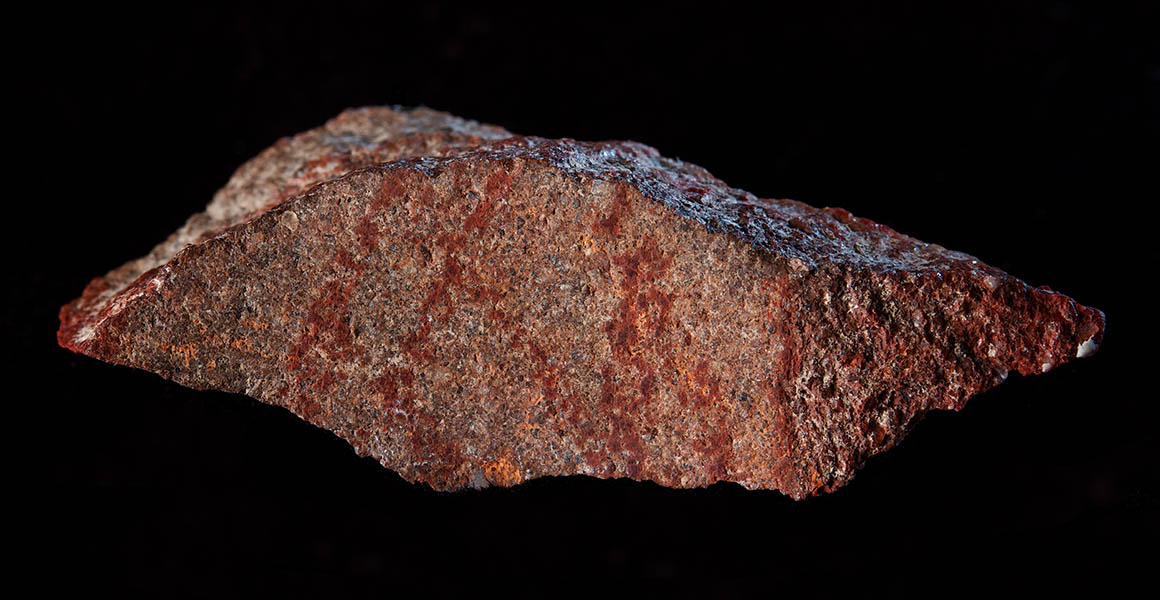
The Blombos Cave drawing with ochre pencil on silcrete stone. Image: Craig Foster
A team of scientists from Norway, South Africa, Switzerland and France found that the pattern had been intentionally drawn onto silcrete stone. It is about 73,000 years old, making it at least 30,000 years older than other abstract and figurative drawings that have been found in Africa, Europe and southeast Asia.
Similar patterns have been found in South Africa before, but those were engraved rather than drawn onto stone. This finding, published in the journal Nature, proves that early Homo sapiens in southern Africa could make graphic designs in various media using different techniques.
Dr Silvia Bello, a Museum researcher who studies the evolution of human behaviour, says, 'The appearance and development of a new technique to produce an abstract design - drawing signs rather than engraved signs - has implications for our understanding of the complex behaviour of early modern humans around 73,000 years ago. It shows how rich and complex human behaviour already was during that time.'
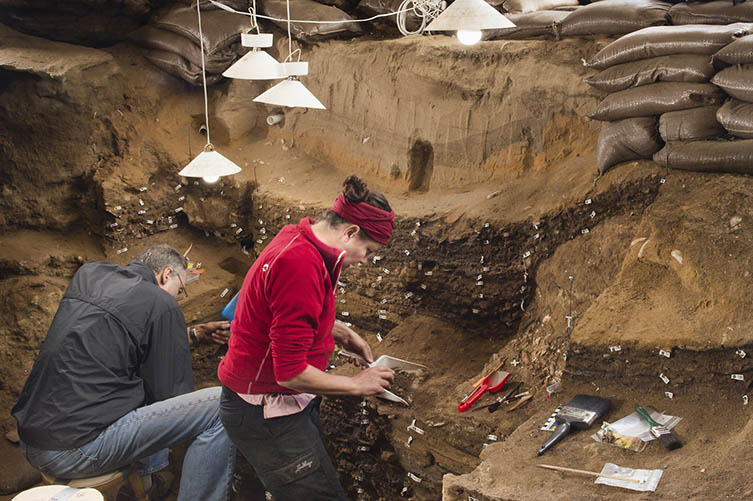
Researchers working inside Blombos Cave. Image: Magnus M. Haaland.
Where was the drawing found?
The drawing was discovered in Blombos Cave on the southern coast of South Africa.
The cave is well known among human evolution researchers because it has already yielded some of the earliest known evidence of modern human cultural activity. Past finds include early human artefacts dating to between 70,000 and 100,000 years ago, including shell beads, engraved pieces of ochre and specialised bone tools.
Silvia says, 'This new discovery adds to the already rich and well-documented record of finds associated with modern human behaviour from the cave. It suggests an even richer range of expertise than expected.'
How was it created?
Based on experiments recreating the pattern, the authors of the study concluded that the drawing was made with a pointed ochre crayon, with a tip measuring between one and three millimetres.
The abrupt termination of the lines at the edge of the stone suggests that the pattern originally extended over a larger surface, and may have been more complex.
Ochre is rock that is rich in iron, giving it a characteristic red or yellow colour. Ochre powder was used in a variety of ways in the Middle Stone Age, including as a glue additive and possibly as a sunscreen.
Experts have not yet agreed on whether this pattern is likely to have been an artistic creation or not.
Silvia adds, 'The analyses of the lines clearly suggested they were a deliberate creation. The question, however, remains whether their meaning is artistic.
'This work suggests such a possibility, but I wonder if those lines could equally have been created by simply sharpening an ochre crayon, which would then be used elsewhere. I suspect the results could have been the same, although the regularity of the lines is more consistent with an artistic interpretation.'
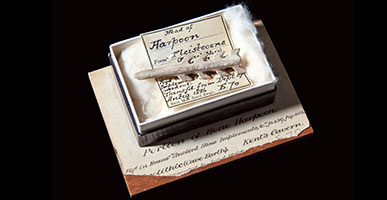
Explore human evolution
Museum research and collections are helping to answer where, when and how humans evolved.

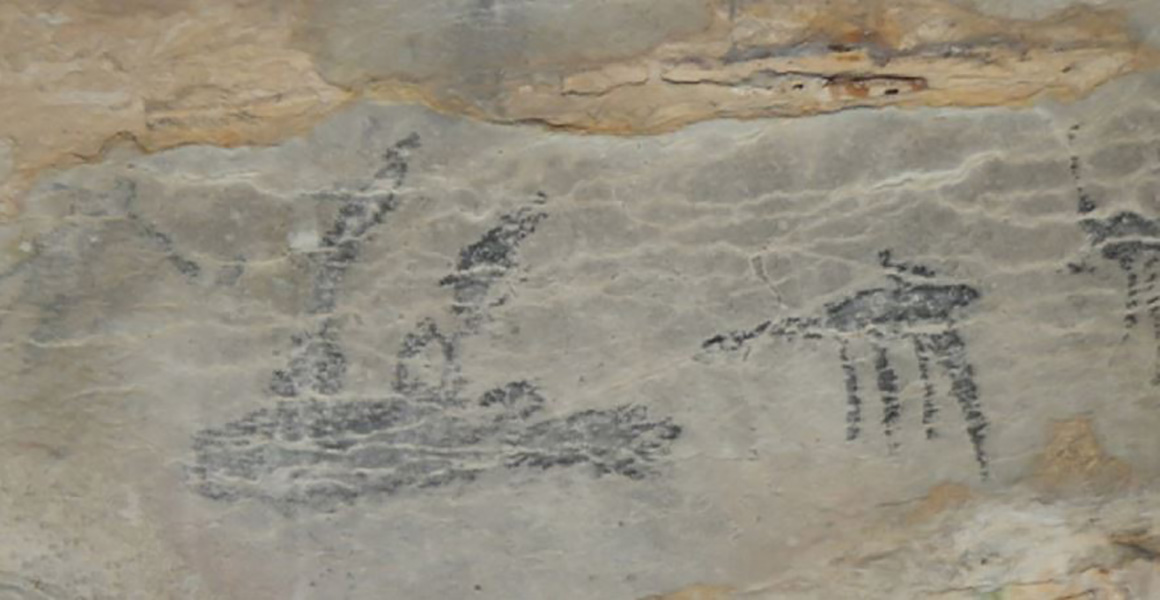
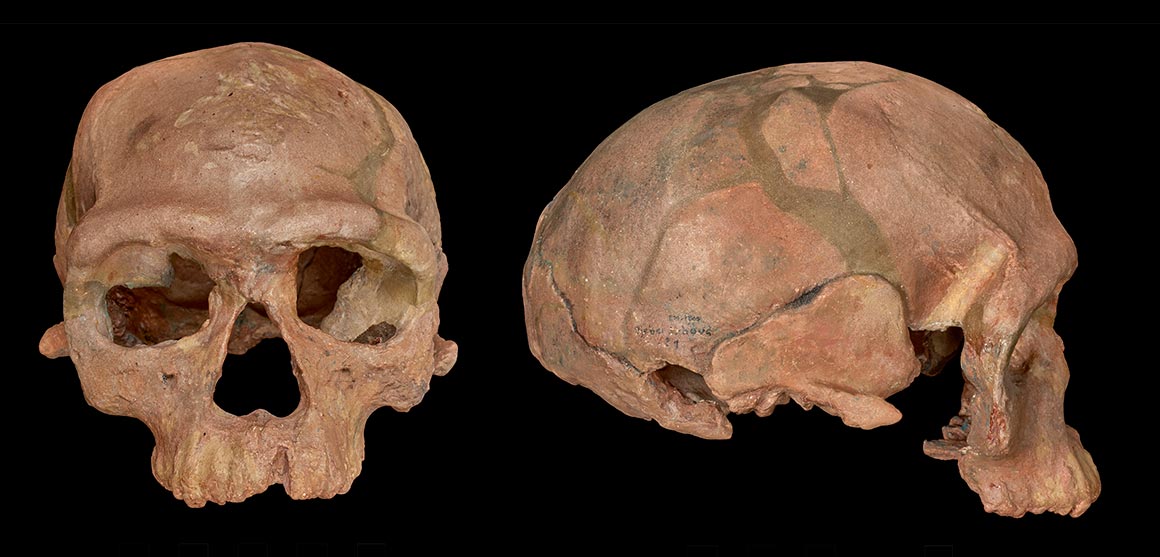

Don't miss a thing
Receive email updates about our news, science, exhibitions, events, products, services and fundraising activities. We may occasionally include third-party content from our corporate partners and other museums. We will not share your personal details with these third parties. You must be over the age of 13. Privacy notice.
Follow us on social media